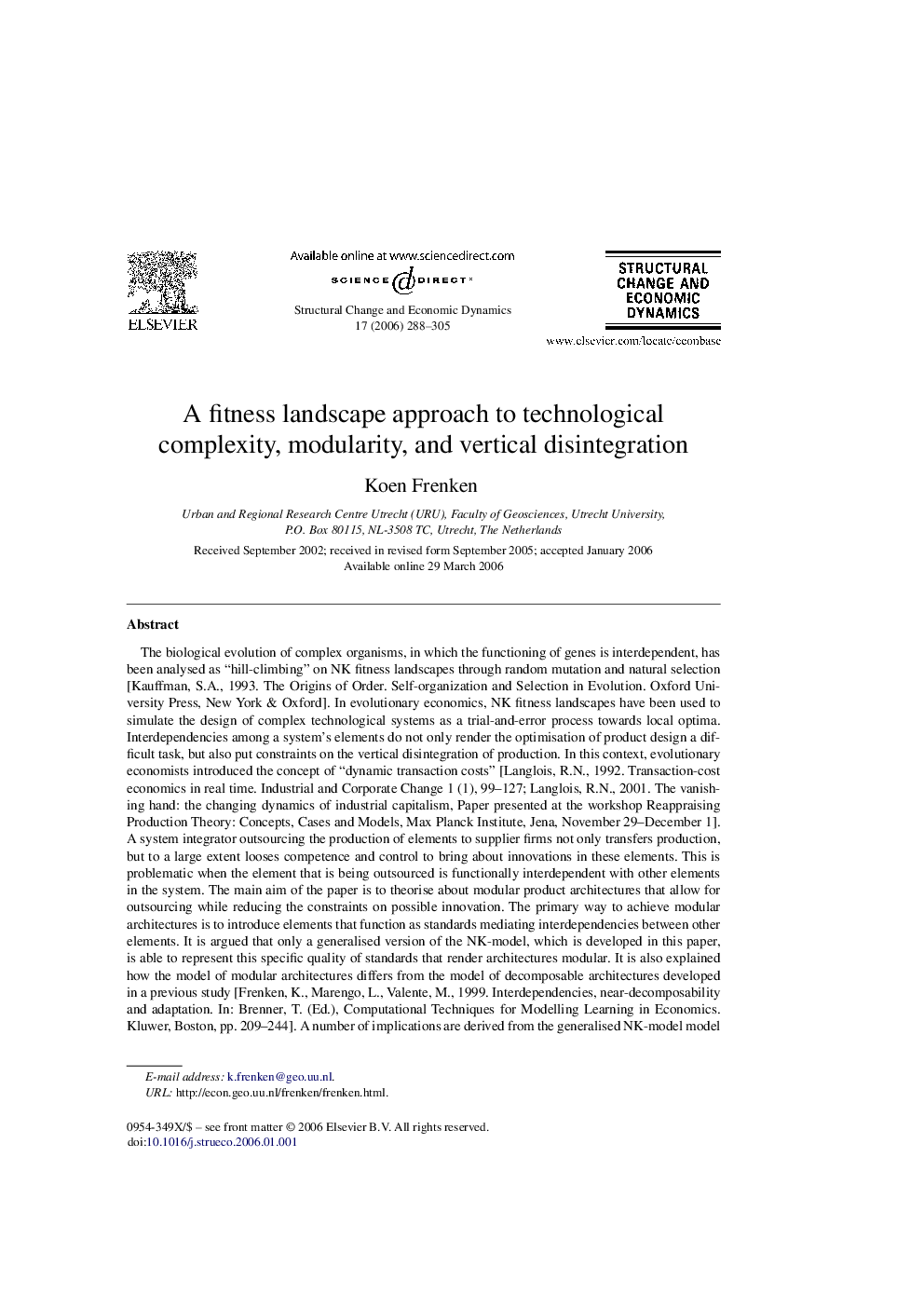| Article ID | Journal | Published Year | Pages | File Type |
|---|---|---|---|---|
| 990116 | Structural Change and Economic Dynamics | 2006 | 18 Pages |
The biological evolution of complex organisms, in which the functioning of genes is interdependent, has been analysed as “hill-climbing” on NK fitness landscapes through random mutation and natural selection [Kauffman, S.A., 1993. The Origins of Order. Self-organization and Selection in Evolution. Oxford University Press, New York & Oxford]. In evolutionary economics, NK fitness landscapes have been used to simulate the design of complex technological systems as a trial-and-error process towards local optima. Interdependencies among a system's elements do not only render the optimisation of product design a difficult task, but also put constraints on the vertical disintegration of production. In this context, evolutionary economists introduced the concept of “dynamic transaction costs” [Langlois, R.N., 1992. Transaction-cost economics in real time. Industrial and Corporate Change 1 (1), 99–127; Langlois, R.N., 2001. The vanishing hand: the changing dynamics of industrial capitalism, Paper presented at the workshop Reappraising Production Theory: Concepts, Cases and Models, Max Planck Institute, Jena, November 29–December 1]. A system integrator outsourcing the production of elements to supplier firms not only transfers production, but to a large extent looses competence and control to bring about innovations in these elements. This is problematic when the element that is being outsourced is functionally interdependent with other elements in the system. The main aim of the paper is to theorise about modular product architectures that allow for outsourcing while reducing the constraints on possible innovation. The primary way to achieve modular architectures is to introduce elements that function as standards mediating interdependencies between other elements. It is argued that only a generalised version of the NK-model, which is developed in this paper, is able to represent this specific quality of standards that render architectures modular. It is also explained how the model of modular architectures differs from the model of decomposable architectures developed in a previous study [Frenken, K., Marengo, L., Valente, M., 1999. Interdependencies, near-decomposability and adaptation. In: Brenner, T. (Ed.), Computational Techniques for Modelling Learning in Economics. Kluwer, Boston, pp. 209–244]. A number of implications are derived from the generalised NK-model model that can be taken up in empirical studies on patterns of vertical disintegration in the life-cycle evolution of specific products. An evolutionary framework of vertical integration is needed to supplement the theory of the product life-cycle.
